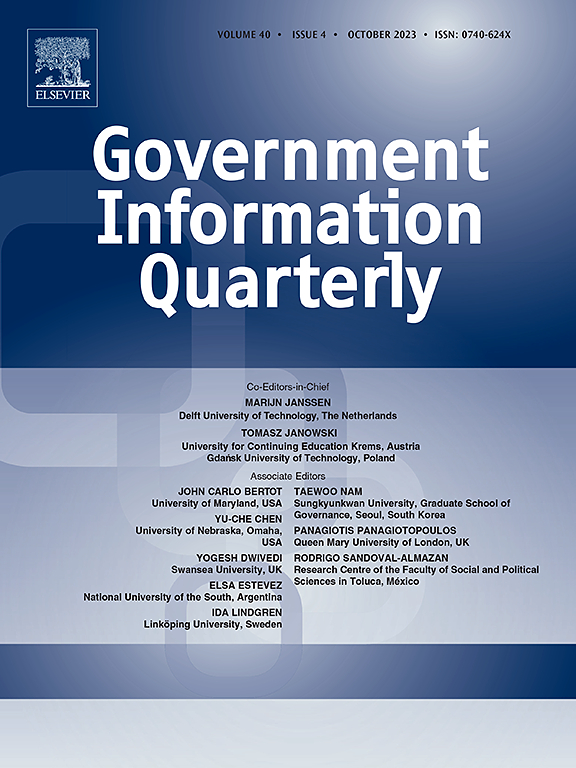Bridging the gap: Towards an expanded toolkit for AI-driven decision-making in the public sector
IF 10
1区 管理学
Q1 INFORMATION SCIENCE & LIBRARY SCIENCE
引用次数: 0
Abstract
AI-driven decision-making systems are becoming instrumental in the public sector, with applications spanning areas like criminal justice, social welfare, financial fraud detection, and public health. While these systems offer great potential benefits to institutional decision-making processes, such as improved efficiency and reliability, these systems face the challenge of aligning machine learning (ML) models with the complex realities of public sector decision-making. In this paper, we examine five key challenges where misalignment can occur, including distribution shifts, label bias, the influence of past decision-making on the data side, as well as competing objectives and human-in-the-loop on the model output side. Our findings suggest that standard ML methods often rely on assumptions that do not fully account for these complexities, potentially leading to unreliable and harmful predictions. To address this, we propose a shift in modeling efforts from focusing solely on predictive accuracy to improving decision-making outcomes. We offer guidance for selecting appropriate modeling frameworks, including counterfactual prediction and policy learning, by considering how the model estimand connects to the decision-maker's utility. Additionally, we outline technical methods that address specific challenges within each modeling approach. Finally, we argue for the importance of external input from domain experts and stakeholders to ensure that model assumptions and design choices align with real-world policy objectives, taking a step towards harmonizing AI and public sector objectives.
缩小差距:为公共部门的人工智能驱动决策开发扩展工具包
人工智能驱动的决策系统正在成为公共部门的重要工具,其应用领域涵盖刑事司法、社会福利、金融欺诈检测和公共卫生等。虽然这些系统为机构决策过程提供了巨大的潜在好处,如提高效率和可靠性,但这些系统也面临着将机器学习(ML)模型与公共部门决策的复杂现实相协调的挑战。在本文中,我们研究了可能出现不匹配的五大挑战,包括分布偏移、标签偏差、数据方面过去决策的影响,以及模型输出方面的竞争目标和人为环路。我们的研究结果表明,标准的 ML 方法往往依赖于无法充分考虑这些复杂性的假设,从而可能导致不可靠和有害的预测。为了解决这个问题,我们建议将建模工作从单纯关注预测准确性转向改善决策结果。通过考虑模型估计值与决策者效用之间的联系,我们为选择适当的建模框架(包括反事实预测和政策学习)提供了指导。此外,我们还概述了应对每种建模方法中特定挑战的技术方法。最后,我们论证了来自领域专家和利益相关者的外部意见的重要性,以确保模型假设和设计选择符合现实世界的政策目标,从而朝着协调人工智能和公共部门目标的方向迈出一步。
本文章由计算机程序翻译,如有差异,请以英文原文为准。
求助全文
约1分钟内获得全文
求助全文
来源期刊

Government Information Quarterly
INFORMATION SCIENCE & LIBRARY SCIENCE-
CiteScore
15.70
自引率
16.70%
发文量
106
期刊介绍:
Government Information Quarterly (GIQ) delves into the convergence of policy, information technology, government, and the public. It explores the impact of policies on government information flows, the role of technology in innovative government services, and the dynamic between citizens and governing bodies in the digital age. GIQ serves as a premier journal, disseminating high-quality research and insights that bridge the realms of policy, information technology, government, and public engagement.
 求助内容:
求助内容: 应助结果提醒方式:
应助结果提醒方式:


